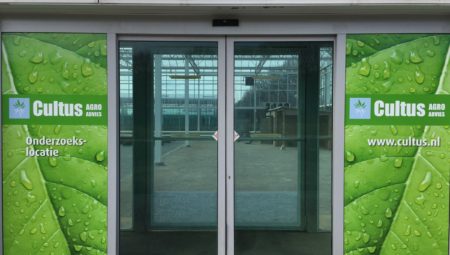Speaking with us are Saskia Goetgeluk, new CEO of Brightlands Campus Greenport Venlo as of 1 May 2017, and Ton Voncken, the new interim director of the Bio Treat Center.
Saskia, you have been working in Venlo for six months now. What struck you when you came to this region?
‘The dynamics are great. This is shown by the many enthusiastic businesses in agrifood and ornamental horticulture which are investing in innovation. In four years’ time, projects amounting to a value of 35 million euros have been realised in the Greenport region, with businesses bearing the costs of half the investments. In itself that is not so surprising: the region
is characterised by a strong and active SME in ornamental horticulture and agrifood. In addition, the region around Venlo is an enormous logistical hub for ornamental horticulture and agrifood products aimed at the German market. Now, most businesses know that a strong position is not a given. You have to defend it yourself or, rather, develop it. The keyword in this is innovation, with healthy (healthier) food first and foremost. Within this context we are also examining new methods of growing and cultivating and alternative raw materials and/or food sources, such as vegetable proteins which can replace animal proteins. At the end of the day it is about a more sustainable, healthier sector which supplies more sustainable and healthier products.’
Does Brightlands Campus Greenport Venlo have the authority to play a key role in the above domains?
‘Definitely; in recent years a lot of work has been done behind the scenes to develop relationships with knowledge and research institutes. Besides the Fontys University of Applied Sciences which already had a site, the HAS University of Applied Sciences and Maastricht University now also have physical branches in Venlo. The Brightlands Campus houses specific research locations such as Bright Labs (editor’s note: including chemical analysis) and Bright Box (editor’s note: daylight-free, multilayer cultivation/city farming). At the start of this year, Cultus Crop Research and the Bio Treat Center went ‘live.’ We also see that businesses (NovioPonics, DeltaStar, Vertical Farming, etc.) are setting up on the Campus, partly attracted by the R&D facilities present. And that has to happen. Public-private partnerships are essential to the realisation of our ambitions. Research must be driven by business. If not, this research will often be shelved and that is not the idea.’
Where do you see the synergy between the various Brightlands Campuses?
‘The campuses in Venlo, Heerlen, Maastricht and Geleen have one big common denominator. They stand for an innovation region where researchers and entrepreneurs are tackling the big challenges in materials, health and food. All four campuses do this by targeting the same domains/competences:
excellent science, talent development, setting up technology platforms and R&D infrastructure, encouraging a start-up climate and community building (editor’s note: connecting/networking). They are four fast-growing campuses driven by global social challenges and actual market demand. One major advantage is that Brightlands can present itself as a whole towards national and international authorities. Joining forces in the area of important innovative areas of attention ultimately provides for more knowledge, innovation and funding for applied research. Brightlands Campus Greenport Venlo has short lines of communication to Maastricht in the field of health and food, to Geleen in the field of materials/plastics based on biomass, and to Heerlen for data sciences.’
Ton, you are taking charge of the Bio Treat Center. How does this site fit in within the entirety of facilities at Brightlands Campus Greenport Venlo?
‘The BTC has a crucial role in upgrading biomass to the point where it can be used in end products. This has to be prepared first, with treatments including separation, purification and extraction. The best way for me to illustrate the role of the BTC on the Campus and the other Brightlands Campuses is with a tangible example: the nettle. At the Campus in Venlo research is being done at Cultus to find out the best cultivation methods and the potential of crop protection. It might be possible to use pressed nettle juice for that purpose in arboriculture. But nettles also have specific components that can be processed in pharmaceutical or biomedical products. Research on that aspect will take place at Maastricht University and in Geleen. That is how we cover the entire spectrum of a crop within Brightlands. At the BTC, we are concentrating on increasing the value fully of all components of a crop. Aspects like yield and preservation of bio-active substances play a part in this.’
Five companies worked to get the BTC off the ground. I assume you are working on increasing this number.
‘Certainly. Currently we are in discussion with around 20 businesses. We are looking for companies with ideas and ambitions in the biomass chain. Companies that want to work together and commit themselves to others. Setting up value chains in food and health and biobased business requires businesses with some perseverance. That is why we are searching expressly for members and/or partners that will bind themselves for the long term to the BTC. Obviously we are mainly interested in parties that produce end products. After all, they form the link between the semi-manufactured product and the end product, that is, the market. An approach which starts from the supply end is doomed to fail. So in the BTC, the demand from the market is the guiding principle. We already have the necessary market parties on board, but we are always looking for new businesses and corresponding markets.’


